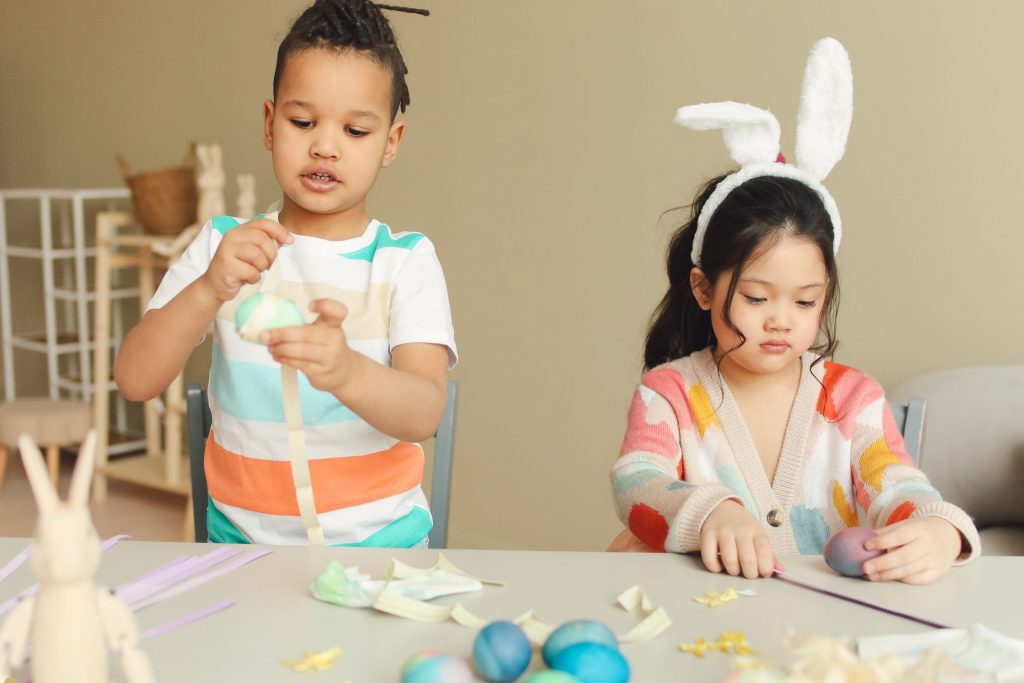
Fun Easter Maths Activities for KS2 – Problem Solving Focus
Easter is a great time to make maths engaging and enjoyable with problem-solving activities! These fun Easter-themed challenges help KS2 students develop their reasoning, arithmetic, and logical thinking skills while having fun.
1. Easter Egg Hunt Challenge (Word Problems & Logical Thinking)
This activity combines problem-solving with a fun scavenger hunt.
How to Play:
- Hide paper eggs around the classroom or playground, each with a different maths problem.
- Solve the problem to find a clue leading to the next egg.
- The final clue leads to a “Golden Egg” (prize or reward).
Example Problems:
- There are 24 eggs and 8 baskets. How many eggs go in each basket?
- Answer: 24 ÷ 8 = 3 eggs per basket
- A bunny hops 3 steps at a time. If it wants to travel 21 steps, how many hops does it take?
- Answer: 21 ÷ 3 = 7 hops
- A chocolate shop sells eggs in boxes of 6. How many boxes do you need for 54 eggs?
- Answer: 54 ÷ 6 = 9 boxes
Extension: Use word problems involving addition, subtraction, multiplication, and division to increase difficulty. How to Improve Your Child’s Reading Comprehension
2. Chocolate Fractions (Fractions & Decimals)
This tasty maths activity helps children understand fractions in a visual and practical way.
How to Play:
- Use chocolate bars divided into equal pieces (e.g., 12 squares per bar).
- Ask students to represent fractions using the chocolate pieces.
- Example: “If a chocolate bar has 12 pieces and you eat 3, what fraction of the bar is left?”
- Answer: 9/12 (which simplifies to 3/4).
Extension: Introduce equivalent fractions, decimals, and percentages (e.g., 3/4 = 75%). Become an Education Franchise Partner with LTSchool

3. Easter Egg Division and Multiplication
This activity reinforces division and multiplication skills using Easter eggs and baskets.
How to Play:
- Give students a number of eggs and baskets.
- Ask them to divide the eggs equally.
- Example: “There are 36 eggs and 6 baskets. How many eggs in each basket?”
- Answer: 36 ÷ 6 = 6 eggs per basket
Challenge: Introduce remainders for higher difficulty.
- Example: “There are 37 eggs and 5 baskets. How many full baskets and how many are left over?”
- Answer: 37 ÷ 5 = 7 full baskets with 2 eggs left over.
4. Bunny Hop Coordinates (Coordinates & Positioning)
This game helps students understand grid references and coordinates.
How to Play:
- Draw a coordinate grid on the board or a sheet of paper.
- Place an Easter bunny at (2,3) and give instructions for movement.
- Example: “The bunny hops 3 steps right and 2 steps up. Where is it now?”
- Answer: (2+3, 3+2) = (5,5)
Challenge: Ask students to write their own directions for a partner to follow on the grid. Learn to code, read the Future of coding
5. Easter Symmetry and Shapes (Geometry & Symmetry)
A great activity for developing symmetry and shape recognition skills.
How to Play:
- Give students a half-drawn Easter egg and ask them to complete the symmetrical design.
- Use mirrors to check symmetry.
- Discuss lines of symmetry in Easter-themed shapes like eggs, bunnies, and chicks.
Challenge: Introduce tessellation by creating repeating Easter egg patterns with different geometric shapes.
6. Easter Shopping Challenge (Money & Budgeting Skills)
This real-world problem-solving activity teaches students how to budget, add, subtract, and calculate change.
How to Play:
- Set up an imaginary Easter shop with chocolate eggs, bunny toys, and decorations, each with a price tag.
- Give students a budget and ask them to “buy” different items.
- Example: “You have £5. A chocolate egg costs £1.75, and a bunny toy costs £2.50. Can you buy both? How much change do you get?”
- Total cost: £1.75 + £2.50 = £4.25
- Change: £5.00 – £4.25 = £0.75
Challenge: Use different currency denominations to work out how the change is given (e.g., “How many 50p, 20p, and 5p coins make up the change?”).
Final Thoughts
These fun Easter maths activities encourage critical thinking, logical reasoning, and practical application of maths concepts. They can be done individually, in pairs, or in teams for added excitement! Let’s connect for Online tutoring UK
